Introduction
Kylian Mbappé, the French national football team captain, openly criticized the necessity of wearing a mask due to his recent injury before leading France against Belgium in the Euro 2024 last 16 match. Despite his grievances, Mbappé’s leadership and performance played a crucial role in securing France’s advancement to the quarterfinals.
The 25-Year-Old Striker’s Challenges
Kylian Mbappé, at 25 years old, faced a significant challenge when he broke his nose in a collision during France’s 1-0 victory over Austria in their tournament’s opening game. His absence was felt in the subsequent goalless draw with the Netherlands. However, his return was marked by a crucial penalty goal in the 1-1 draw against Poland, although he expressed discomfort with the mask he had to wear.
🚨🚨| BREAKING: Kylian Mbappé is OUT of the game vs Netherlands.
— CentreGoals. (@centregoals) June 18, 2024
He’ll wear a mask for the rest of #EURO2024. How his nose heals will determine whether he can play the last group match vs Poland. 😳🇫🇷
[@CanalplusFoot] pic.twitter.com/LKWFtPx2sK
Mbappé’s Own Words
“I didn’t think it would be, but playing with a mask is horrible,” Mbappé said before the Belgium game in Düsseldorf. “I have changed [the mask] because every time there was something that wasn’t right. It isn’t easy. It limits your vision, and the sweat gets blocked up, so you must remove it to let it run away. I will do it as soon as I can take it off, but I don’t have a choice. That is how my tournament is going to be. I can only play like that. It is annoying, but I have to say thanks to the mask.”
Coach’s Perspective
France’s coach, Didier Deschamps, emphasized the need for efficiency and goal-scoring in the tournament’s knockout stages. He recognized the difficulty of achieving this, particularly with key players like Mbappé facing physical challenges.
France vs. Belgium: Match Summary
Date: July 1, 2024
Location: Düsseldorf Arena, Düsseldorf, Germany
Score: France 1-0 Belgium
France’s only goal came late in the game when a shot from Randal Kolo Muani deflected off Belgian defender Jan Vertonghen and into the net, ensuring France’s progression to the next round.
Official Referee: Glynn Nyberg
Audience Count: 42,500
Match Statistics and Players Line-Up
| Team | Line-Up | Key Substitutes |
| France | Lloris, Pavard, Varane, Kimpembe, Hernandez, Rabiot, Tchouaméni, Griezmann, Coman, Mbappé, Giroud | Kolo Muani, Camavinga |
| Belgium | Courtois, Vertonghen, Alderweireld, Meunier, Castagne, Witsel, De Bruyne, Hazard, Lukaku, Doku, Carrasco | Tielemans, Batshuayi |
Game Highlights and Key Moments
First Half
Both teams played cautiously in the first half, with France and Belgium focusing on maintaining solid defensive formations. Belgium’s Kevin De Bruyne and Eden Hazard tried to penetrate the French defense but were repeatedly thwarted by the French backline, particularly Raphael Varane and Presnel Kimpembe. On the French side, Antoine Griezmann and Kingsley Coman created several chances, but Belgium’s goalkeeper Thibaut Courtois was in top form, making crucial saves to keep the score level.
Second Half
Both teams’ approaches in the second half were more aggressive. France’s Adrien Rabiot and Aurelien Tchouaméni controlled the midfield, enabling quick transitions from defense to attack. Kylian Mbappé, despite his discomfort with the mask, showcased his speed and dribbling skills, creating multiple opportunities for his teammates.
Decisive Moment
The match remained goalless until the 85th minute when Randal Kolo Muani’s shot deflected off Jan Vertonghen, resulting in an own goal that secured France’s 1-0 victory. Mbappé celebrated enthusiastically, reflecting the tension and competitive spirit of the game.
Upcoming Matches for France
France’s victory against Belgium has set the stage for their quarterfinal clash. The next match is anticipated to be challenging, with France facing either Italy or Spain, two of the tournament’s strong contenders. The quarterfinals are scheduled for July 7, 2024, at the Allianz Arena in Munich, Germany.
Game Analysis and Future Prospects
The tactical approaches of both teams in this match were evident from the onset. Belgium, known for their attacking prowess, had to contend with a solid French defense, while France’s counter-attacking strategy, spearheaded by Mbappé, kept the Belgian defense on high alert.
Key Players’ Performance
- Kylian Mbappé: Despite the mask, Mbappé’s pace and agility were crucial in stretching the Belgian defense.
- Thibaut Courtois: The Belgian goalkeeper made several key saves, keeping Belgium in the game until the own goal.
- Randal Kolo Muani: His shot, which resulted in his own goal, was decisive in the match.
Tactical Insights
France’s ability to adapt their tactics, switching from defensive solidity to quick counter-attacks, was pivotal. Didier Deschamps’ decision to bring on Kolo Muani added fresh legs and energy to the French attack, ultimately leading to the decisive goal.
Future Matches and Predictions
As France prepares for their quarterfinal match, they will maintain their defensive solidity while improving their goal-scoring efficiency. The potential clash against Italy or Spain will test France’s tactical flexibility and resilience.
Detailed Match Commentary and Highlights
First Half Action
Both France and Belgium entered the match with cautious optimism, given their storied rivalry and respective struggles in the group stage. Meticulous defensive strategies from both teams characterized the first half. Hugo Lloris made a critical save early on to deny Romelu Lukaku, who found space behind the French defense. On the opposite end, Thibaut Courtois demonstrated his goalkeeping prowess by stopping a fierce shot from Kingsley Coman.
Tactical Adjustments
France’s coach, Didier Deschamps, made tactical adjustments by encouraging his midfielders, Adrien Rabiot and Aurelien Tchouaméni, to press higher up the pitch. This change created more space for Antoine Griezmann and Kylian Mbappé to exploit Belgium’s defense. Despite these efforts, the first half ended in a stalemate, with both teams unable to break the deadlock.
Second Half Strategies
The second half saw a more aggressive French side. Deschamps introduced Randal Kolo Muani to inject pace into the attack, replacing Olivier Giroud. Belgium responded by bringing on Youri Tielemans to strengthen their midfield. Both teams exchanged chances, but France found the breakthrough in the 85th minute when Kolo Muani’s shot deflected off Jan Vertonghen for an own goal.
Post-Match Reactions
Kylian Mbappé’s Perspective
Mbappé, who wore a protective mask throughout the match, expressed relief and satisfaction post-match. “Playing with the mask was tough, but winning makes it all worth it. The team showed great spirit, and we are ready for the next challenge,” he stated.
Didier Deschamps’ Analysis
France’s head coach, Didier Deschamps, praised his team’s resilience. “It was a hard-fought victory. We knew Belgium would be a tough opponent. Our defense held firm and our attack capitalized on the crucial moment. We must continue this momentum into the quarterfinals,” Deschamps commented.
Belgium’s Disappointment
Belgium’s coach, Domenico Tedesco, highlighted his team’s missed opportunities. “We created chances but lacked the finishing touch. It isn’t enjoyable, but we must learn and move forward. The players gave their all, and we will return stronger,” Tedesco remarked.
The Challenge of Playing with Masks
Masks in sports, particularly rugby and football, serve to protect players from exacerbating facial injuries. Players often wear these masks after suffering fractures to ensure they can participate safely while the injury heals. The mask reduces the risk of further trauma and supports the affected area.
The Ranking of Updated 12 Notable Football Players Who Wore Protective Mask:

Kylian Mbappé’s Experience
Kylian Mbappé’s discomfort with his protective mask was evident in his comments. “Playing with a mask is horrible,” he said. His struggle highlights the physical and psychological challenges athletes face when recovering from facial injuries.

Josko Gvardiol
- Throughout the Qatar World Cup, notably in the game against Japan, Manchester City and Croatia defender Josko Gvardiol used a safety mask.
- Following a collision with teammate Willi Orban, he broke his nose playing for RB Leipzig in their 3-1 victory against SC Freiburg in 2022.

Son Heung-min
- Following a facial injury in a Champions League game against Marseille, Tottenham forward Son Heung-min donned a protective face mask during an FA Cup third-round match against Portsmouth.
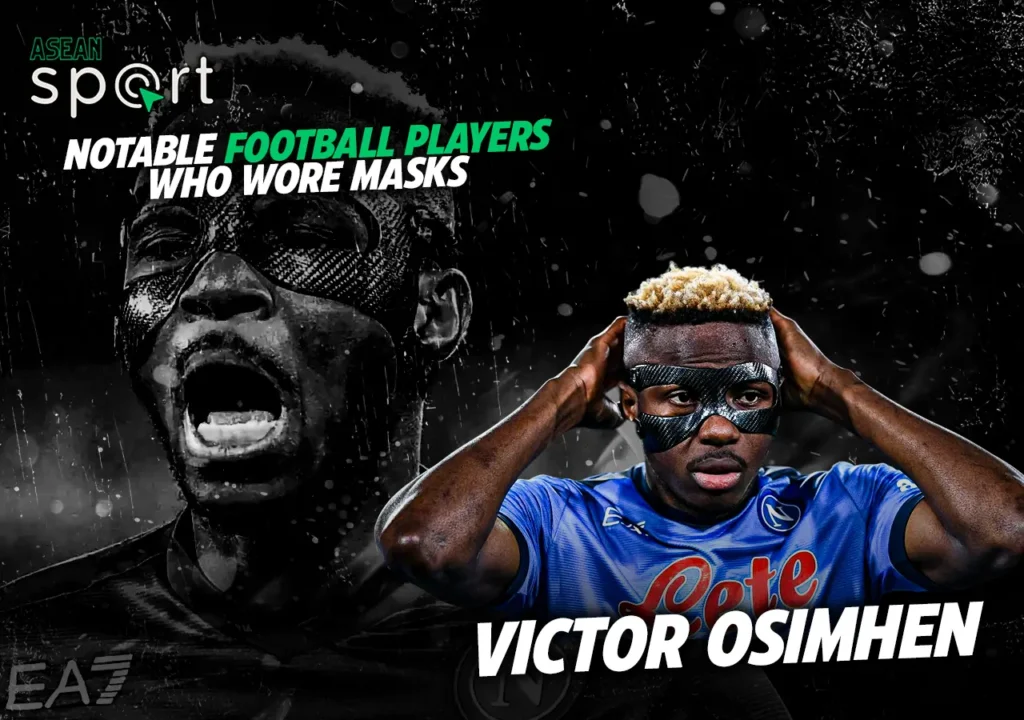
Victor Osimhen
- Victor Osimhen, a Napoli scorer, has continued to wear a mask during games since he hurt his eye socket in a Serie A game against Inter in 2021.
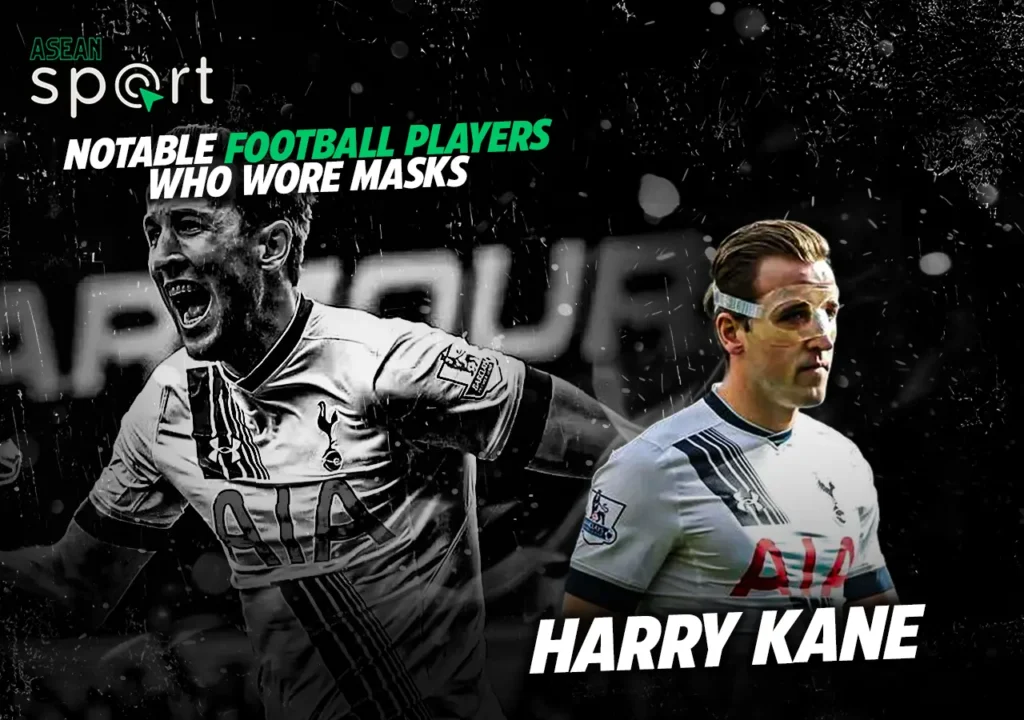
Harry Kane
- Using a protective mask was necessary after Harry Kane, the captain of England, fractured his nose while playing for Tottenham against Crystal Palace in the FA Cup 2016..
- Kane’s demand for the mask originated from an injury he had in a prior game that required nasal protection.
Kane stopped donning his mask what year?
Accepting Austin’s suggestion, Kane challenged Triple H the next week in Madison Square Garden. After his stablemates interfered, Triple H won the game; on Raw’s June 23, 2003, episode, Kane chokeslammed Van Dam, turning heel in the process.

Diego Costa
- In 2016, Diego Costa wore a protective facial mask while playing for Chelsea against Southampton in the Premier League. During a training session, He sustained a broken nose in a collision with teammate Fikayo Tomori.
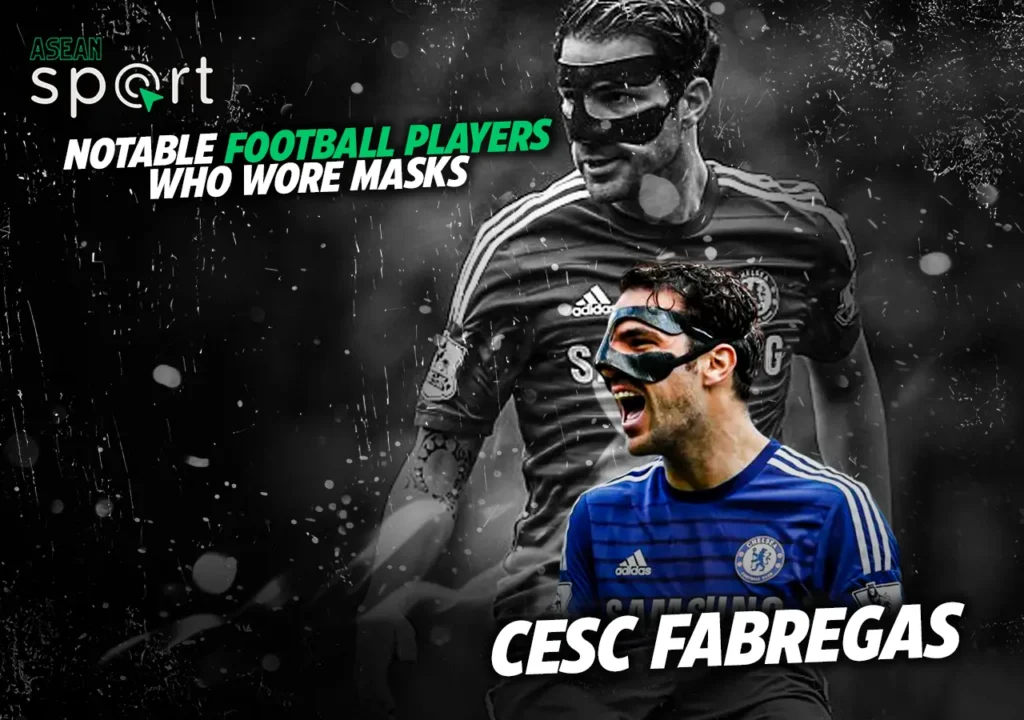
Cesc Fabregas
- Cesc Fabregas, a former Spanish midfielder who later became a BBC commentator, donned a mask when he put in the game-winning goal to lead 1-0 over QPR in the Premier League in 2015. This occurred after he sustained a break in his nose during a match against Stoke.
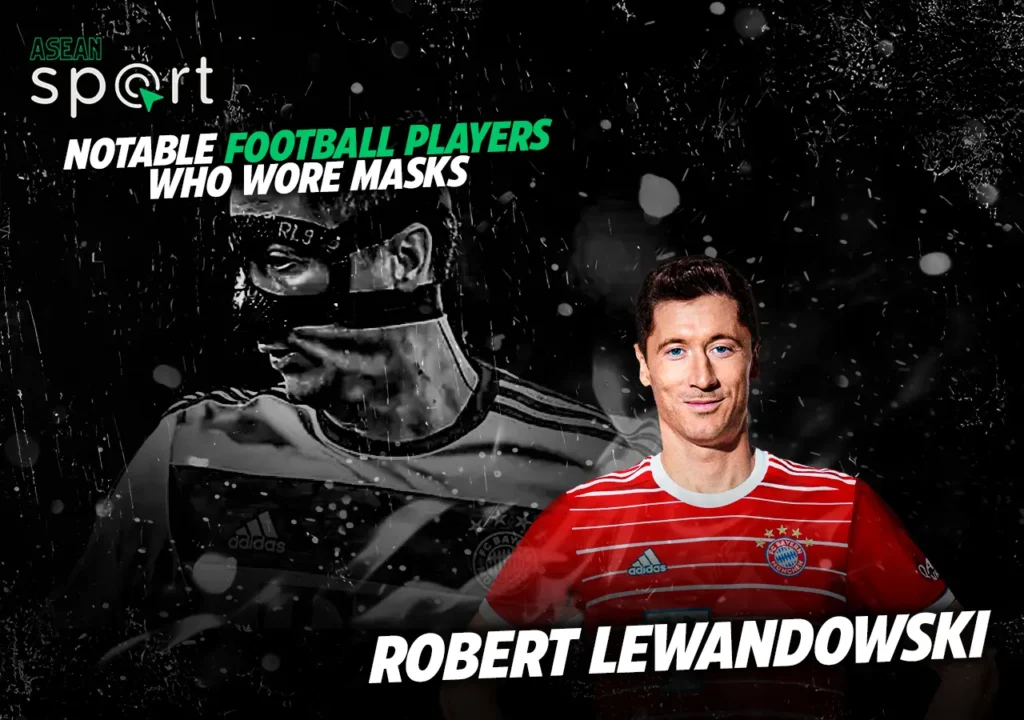
Robert Lewandowski
- Robert Lewandowski, a Polish striker, sustained nose and mandible fractures during a Bundesliga match against his former team, Borussia Dortmund, in 2015. Subsequently, he utilized a protective mask.
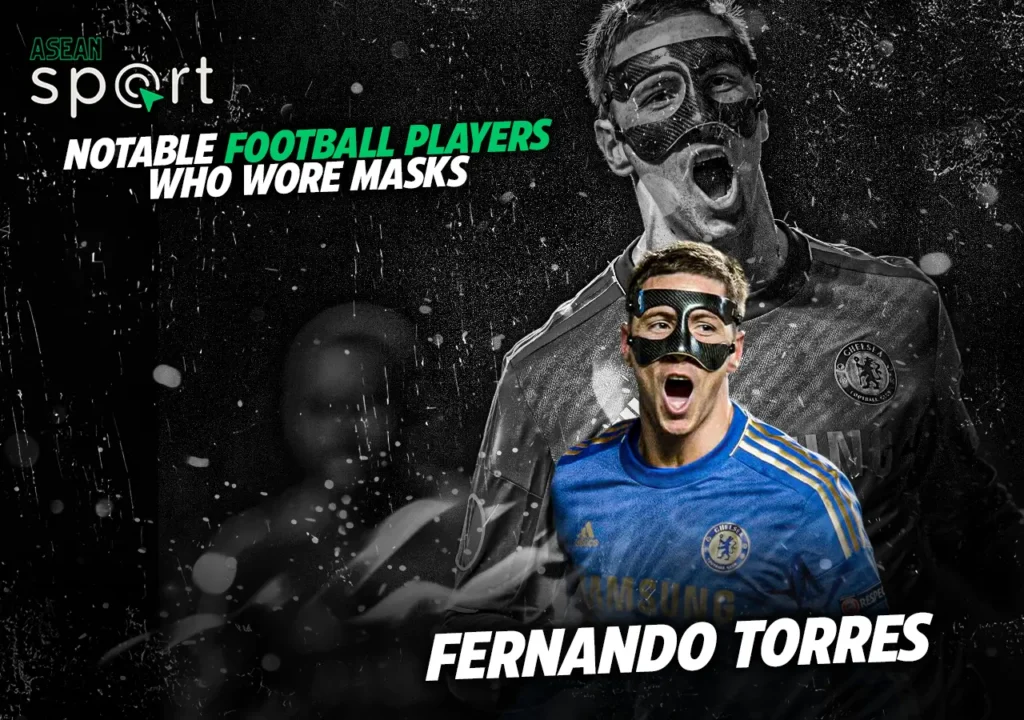
Fernando Torres
- Fernando Torres, a Chelsea player, suffered a broken nose while playing for Steaua Bucharest in the 2013 Europa League. Therefore, he played behind a mask in a match against Liverpool, his previous team.
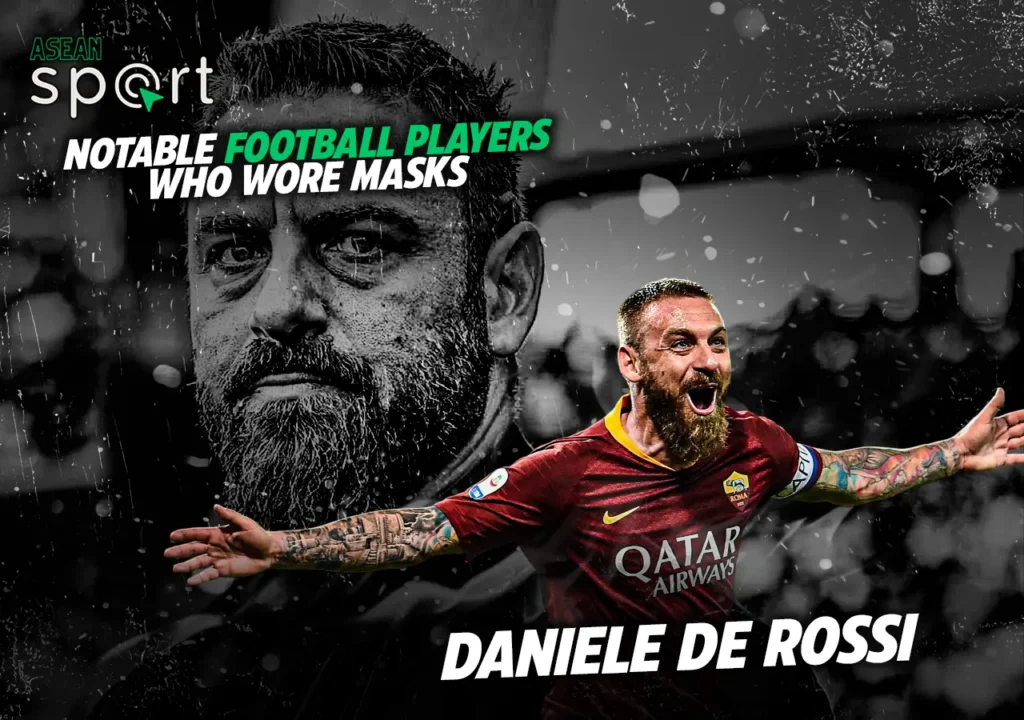
Daniele de Rossi
- Daniele de Rossi, who is now the manager of Roma, played a few games while wearing a protective mask after breaking both of his cheekbones in a 2009 match against Inter Milan.

John Terry
- After breaking his cheekbone in a collision with Clint Dempsey in Fulham’s encounter in 2007, Chelsea captain John Terry trained in a face mask in preparation for their Champions League match against Valencia.

Paul Gascoigne
- Paul Gascoigne, the first player to wear a mask, did so in 1993 during a World Cup qualifier against Poland to shield his fractured cheekbone, which he had injured after the captain of the Netherlands elbowed him in a previous qualifier.
Why Rugby and Football Players Wear Masks
In contact sports like rugby and football, facial injuries are not uncommon, often resulting in fractures or other trauma that can sideline players. Protective masks have become indispensable to facilitate quicker recovery and ensure athletes can return to the field with minimal risk. These masks serve several crucial purposes:
- Protection from Impact: Masks shield the injured area from additional trauma during the game’s rigorous physical demands. This protection is vital in preventing further damage and allowing bones to heal undisturbed.
- Stabilization of Fractures: Facial fractures require stability for proper healing. Masks are designed to immobilize fractured bones, reducing movement that could hinder recovery and potentially lead to complications.
- Psychological Reassurance: Beyond physical protection, masks provide psychological reassurance to athletes. By covering the injured area and providing security, masks allow players to participate confidently without the fear of exacerbating their injuries.
These benefits highlight the dual role of protective masks in sports: ensuring physical safety and psychological well-being, enabling athletes to continue playing at their peak performance levels while recovering from facial injuries.
Conclusion
Kylian Mbappé’s experience with a protective mask during Euro 2024 sheds light on the challenges athletes face when balancing injury recovery with competitive play. Despite the discomfort, Mbappé’s resilience and leadership have been crucial for France, highlighting the importance of protective gear in ensuring athletes’ safety and performance. As France advances in the tournament, fans and analysts alike will watch how they adapt and overcome these challenges.
With the Euro 2024 entering its decisive knockout stages, the focus will remain on key players like Mbappé, whose determination and skill inspire teammates and supporters. The upcoming matches promise to deliver more thrilling football, and the resilience shown by athletes playing through injuries will undoubtedly add to the tournament’s narrative.
Final Thoughts
The lessons learned from their clash with Belgium will be invaluable as France prepares for their quarterfinal match. Adaptability, tactical understanding, and mental fortitude must be balanced. Fans can look forward to an exciting continuation of Euro 2024, with the world’s best teams and players showcasing their talents on the grandest stage.





















